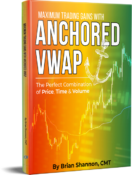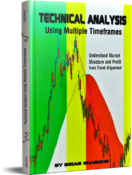Welcome to Alphatrends– Let’s Get Started!
Please Read These Guidelines in Full to Obtain the Most Value From Your Membership
Thank you for becoming a member of Alphatrends! The primary time frame for Alphatrends is swing trading. All of the ideas taught can be applied to any timeframe.
Every user is encouraged to “make the trade their own.” This means to make choices based on what is right for you, your risk profile, and your personal objectives on each and every trade. If you have questions about transitioning a trade to a different time frame, simply ask in the Alphatrends’ Forums. or during the Bi-Monthly Webinars.
For all other administrative questions, please Contact Us Here.
A message from Brian Shannon, CMT, CEO & Founder of Alphatrends:
“The Alphatrends’ community has helped to train and mentor thousands of traders worldwide since 2005. The knowledge I have accumulated in my 30+ years of daily trading experiences is something I enjoy sharing. I have a passion for helping others, and I am glad that you have trusted me as an advisor and to nurture your success”.






